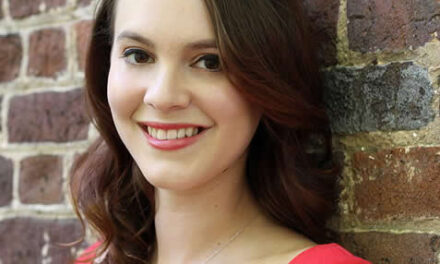The Winston-Salem Symphony’s performance in Stevens Center on September 9 was just part of what was billed as “An Electrifying Evening” that began with a reception and buffet dinner and culminated with a post-concert party at the Wachovia Center. The performance marked the debut of Robert Moody as the orchestra’s new Music Director. He is the fourth music director in the ensemble’s 59-year history. The Greenville, SC, native will concurrently complete his eighth and last season with the Phoenix Symphony, where he served as Associate and then Resident Conductor. Earlier in his career he was the choral conductor at the Brevard Music Center. Moody made his Carnegie Hall and Santa Fe Opera debuts in 1999. Because of the festivities, the Winston-Salem concert began at 8:30 p.m. and was played without intermission.
Before the performance, in response to an enthusiastic reception, the personable Moody praised the musicians. He drew special attention to family members and Phoenix Symphony officials present and asked his predecessor, Peter Perret, to stand for a warm reception. During reseating of the stage for the last work, Executive Director Merritt Vale announced that the orchestra musicians were donating their services for the concert – a generous gift, indeed, for the new director and the audience! This was also the debut of a new orchestra shell.
Dvorák’s exuberant “Carnival” Overture, Op. 92, the second of a trio of overtures entitled Nature, Life, and Love, was a good showpiece with which to open the concert. I am sure the conductor and orchestra will quickly adjust to the efficient shell. The brilliant orchestral tutti that begins the work was brass and percussion dominated with the strings more seen than heard. The poetic slow section found the woodwinds and strings in fine form. Among several important solos were those by four principals: Kathryn Levy, flute, John Ellis, oboe, Cara Fish, English horn, and Ron Rudkin, clarinet. Care had been lavished on string articulation, and brass-versus-string balance improved during the concluding “allegro” portion.
There was nothing hackneyed in the choice of Stravinsky’s Suite from the ballet Pulcinella. Balances were perfect throughout, as were the precise attacks and well sprung rhythms. This is an ideal selection to display the high level of musicianship in almost every section of the orchestra. The playing was by turns wonderfully pungent and dazzling with color. There were too many strongly-characterized solos and small ensemble episodes to credit everyone, but among the more memorable were those involving Frederick Bergstone and Robert Campbell, horns, oboist Ellis, the bassoonists led by Mark Popkin, cellist Grace Lin, Concertmistress Corine Brouwer and, not least, double-bassist Lynn Peters, whose comic duet with trombonist Brian French brought hearty chuckles from the audience.
Ravel’s orchestration of Mussorgsky’s Pictures at an Exhibition received a virile standard interpretation from Moody. There were fleeting moments during several tutti sections and the finale, “The Great Gate of Kiev,” when the brass overshadowed the strings. Principal players’ solos vividly portrayed the many Victor Hartman images memorialized by the composer. Anita Cirba’s depiction of the chattering beggar Schmuyle on a muted piccolo trumpet was the best I have yet heard in live performance. Alto saxophonist Taimur Sullivan, a new faculty member at the NCSA, was a fine troubadour in “The Old Castle” section. (Like many of my Triangle colleagues, I am hypersensitive to issues of orchestral balance since, through two music directors over nearly thirty years, the North Carolina Symphony’s strings were often covered by loud brass.)
After several seasons of mysteriously half-empty houses – to this critic, the programs and soloists were excellent – it was refreshing to see and feel the presence of an attentive audience in the sold-out Stevens Center. The concert was a good sample of the musicians’ capabilities – they have skills that will surely be honed to even higher standards as conductor and players get used to each other and to the changed acoustics. Moody spoke of his determination to break down the “fourth wall” between the stage and the listeners as part of his effort to build and expand new audiences for the 21st century. It will be interesting to see if this can be done without pandering or “dumbing-down” the programming.











